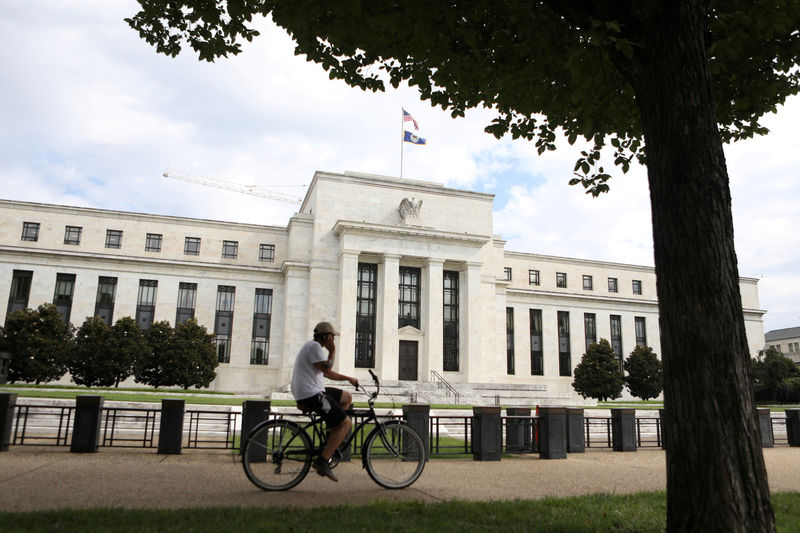Investing.com -- The dollar was mostly higher in early trading in Europe Tuesday, as fears of a sustained spike in oil prices and conflict in the Persian Gulf undercut risk assets ahead of the U.S. Federal Reserve’s two-day policy meeting.
The Fed had been almost universally expected to cut the target range for the Fed funds rate by 25 basis points at this week’s meeting until the last few days, when stronger-than-expected retail sales and consumer sentiment data, coupled with hopes of a breakthrough in the trade dispute with China, appeared to weaken the argument for easing.
The spike in oil prices since the weekend attack on Saudi Arabia has further muddied the picture, inasmuch as it’s likely to lead to some inflationary pressure as long as oil prices stay elevated.
According to Investing.com’s Fed rate monitor tool, the chance of a rate cut on Wednesday has now fallen to less than 65%.
However, analysts at ING argued that the main impacts of an oil shock are still essentially bullish for the dollar.
“Unless the Fed turns exceptionally dovish, worried that an oil shock undermines the key source of U.S. growth – consumption – then it looks like the dollar can stay relatively bid and EUR/USD sinks into a 1.05-1.10 range into year-end,” Chris Turner, global head of foreign exchange and rates strategy, said in a research note.
The euro was at $1.1012, with the market keeping an eye on the first major confidence indicator of the month, the German ZEW index, due at 5 AM ET (0900 GMT).
By 3:45 AM ET, the dollar index, which tracks the greenback against a basket of major currencies, was at 98.185, little changed from late Monday but making gains against sterling, commodity currencies such as the Aussie and kiwi, and also against emerging currencies.
It also rose to a four-day high against the offshore Chinese yuan, which remains under pressure in the aftermath of weak economic data on Monday.
The British pound remained under pressure after Prime Minister Boris Johnson’s visit to Luxembourg on Monday again illustrated the lack of progress toward sealing a transitional deal with the European Union before Brexit takes place on Oct. 31.
The U.K. Supreme Court is due to start hearings Tuesday on the lawfulness of Johnson’s suspension of parliament, which his opponents claim was done expressly to stop the House of Commons debating Brexit. A ruling is expected any time after Thursday.
